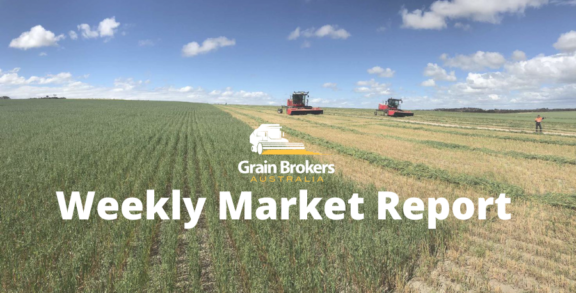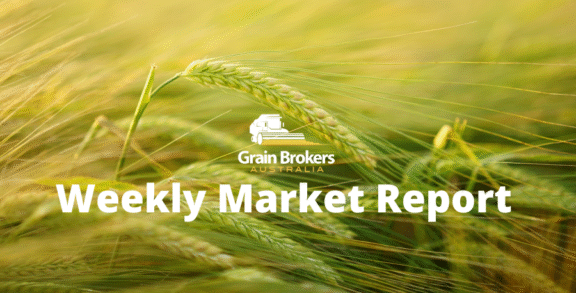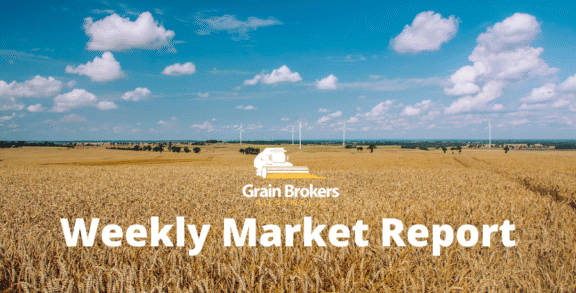
Chicago Board of Trade corn futures continued a fortnight-long bloodbath in last Friday’s trade, collapsing in response to the quite bearish planted area and June stock numbers released by the United States Department of Agriculture during the session.
USDA’s June Planted Acreage Report put the area planted to corn across the US this spring at 37.02 million hectares, almost 600,000 hectares higher than the March Prospective Plantings Report and 450,000 hectares higher than the average trade guess leading into the data release. The planted area estimates are based on responses received by the National Agricultural Statistics Service (NASS) from almost 64,000 growers who were surveyed between May 30 and June 16.
The total area is down 3.3 per cent, or 1.28Mha, compared to last year and is the eighth-highest corn area in the US since 1944. Compared with 2023, the planted area is forecast to be lower or unchanged in 31 of the 48 reporting states, and at 33.77Mha, the final area harvested for grain is expected to be down 3.6 per cent, or 1.24Mha. NASS did note that when surveyed last month, growers reported that they still had 1.36Mha earmarked for corn, but yet to be sown, up from 1Mha in last year’s survey.
As of June 23, 69 per cent of the corn planted in the 18 states that account for 92 per cent of the total seeded area was rated good-to-excellent, down from 72 per cent a week earlier but substantially better than the 50 per cent reported in the same week in 2023. Crop emergence was put at 97 per cent, up from 93 per cent a week earlier and just above the five-year average of 96 per cent.
By Friday’s close of trade, the July corn futures contract had closed lower in nine of the previous ten sessions, setting a new contract low after taking out the previous low, set way back on February 23, on Tuesday. Over the past two weeks, the contract has lost 13.3 per cent of its value, with more than a quarter of that rout in last Friday’s trade.
The total area planted to wheat for the 2024 campaign is estimated at 19.12Mha, 950,000 hectares, or 4.7 per cent lower than 2023, and around 200,000 hectares lower than indicated in the March planting intentions. The big wheat surprise came with a contrarian move in the harvested area forecast. US farmers are expected to reap 15.7Mha, up from 15.1Mha last year. So, the seeded area is down, and the harvested area is up year-on-year.
At 13.68Mha, the area planted to winter wheat is down 7.9 per cent from 2023 and 1 per cent lower than the previous estimate back in March. Of this total, roughly 71 per cent, or 9.75Mha, are Hard Red Winter, 18 per cent, or 2.48Mha, are Soft Red Winter, and 11 per cent, or 1.45Mha, are White Winter.
The condition of this year’s winter wheat crop was reported as 52 per cent good-to-excellent on June 23, up from 49 per cent a week earlier. Despite issues stemming from a lack of precipitation in key states, the moisture situation was far better than the past two drought-reduced crops. Harvest is well underway, with around 40 per cent of the crop in the bin as of June 23, up from 27 per cent a week earlier and well ahead of the five-year average of 25 per cent.
This year’s spring wheat seeding estimate is 4.57Mha, up 1 per cent year-on-year. Of this total, around 4.3Mha is sown to Hard Red Spring. This year’s spring wheat crop was reportedly planted quite rapidly, despite the occasional rain delay, well respected for replenishing soil moisture reserves. The spring wheat crop was rated 71 per cent good-to-excellent on June 23. US growers have increased the area planted to durum wheat in 2024 to almost 900,000 hectares, 29 per cent higher than last year.
Like corn, US wheat futures had a down day on Friday following the release of the USDA reports. However, the movement was minor compared to the journey since April 18. As the Russian wheat production estimates fell through late April and May, December futures exploded, posting a 27.6 per cent rally in the ensuing 27 sessions. With production then appearing to stabilise at around 80 million metric tonne, the momentum changed dramatically. Over the next 18 sessions, the entire rally was erased, and Friday’s close was almost exactly where it began back in April.
On the soybean front, the USDA pegged this season’s planted area at 34.84Mha, up from 33.83Mha last year. This is around 150,000 hectares above grower indications in March and almost 250,000 hectares higher than trade expectations. At the time of surveying, growers reported that a collective total of 5.17Mha assigned to soybeans this season remained unplanted, up significantly from 3.46Mha in the same report last year.
The harvested area is forecast at 34.5Mha compared to 33.33Mha in 2023. As of June 23, crop conditions were reported at 67 per cent good-to-excellent in the 18 states that account for 96 per cent of the planted area. This is down from 70 per cent a week earlier but well above the same week last year when the rating was just 51 per cent. Crop emergence sat at 90 per cent compared to 82 per cent a week earlier and the five-year average of 87 per cent.
The USDA’s June 1 grain stock data was also bearish across the board. Corn stocks were pegged at 127mmt, 22.6mmt higher than the same date in 2023. Of that total, 77mmt was stored on-farm and 50mmt stored off-farm, up 37 per cent and 4 per cent, respectively, compared to 2023. The March to May disappearance, a measure of supplies moving through trade channels for domestic consumption, came in at 85.3mmt against 83.6mmt last year.
US wheat stocks of all classes came in at 19.1mmt, 23.3 per cent above the 2023 level of 15.5mmt. Almost 3.8mmt, or 20 per cent of those inventories, are held on-farm, with the balance of 15.3mmt held in off-farm positions such as mills, elevators, up-country warehouses, terminals and processors. Disappearance across all wheat grades came in at 10.5mmt in the March to May quarter, up 4 per cent on the same period in 2023.
Soybean stocks in all positions on June 1 were reported at 26.4mmt, up 4.7mmt, or 21.8 per cent, compared to a year earlier, adding a bearish nuance to the bullish seeded area number. According to the USDA, off-farm and on-farm stocks currently sit at 12.7mmt and 13.7mmt, respectively, up 44 per cent and 6 per cent compared to June 2023. Total disappearance in the three months to the end of May stood at 23.8mmt, down 2 per cent year-on-year.
It was an interesting end to the week, with a double whammy for corn pushing futures dramatically lower. Wheat took a sympathy pill, following corn down, and soybeans held a neutral stance. All three markets, particularly corn and wheat, now appear to be in oversold territory. With some global weather issues and production challenges yet to be resolved, the next few months may prove to be quite volatile across global grain markets.
Call your local Grain Brokers Australia representative on 1300 946 544 to discuss your grain marketing needs.
Written by Peter McMeekin.





